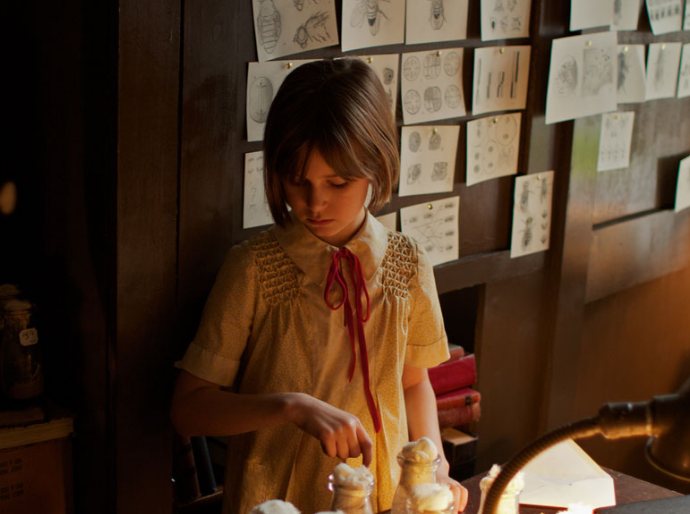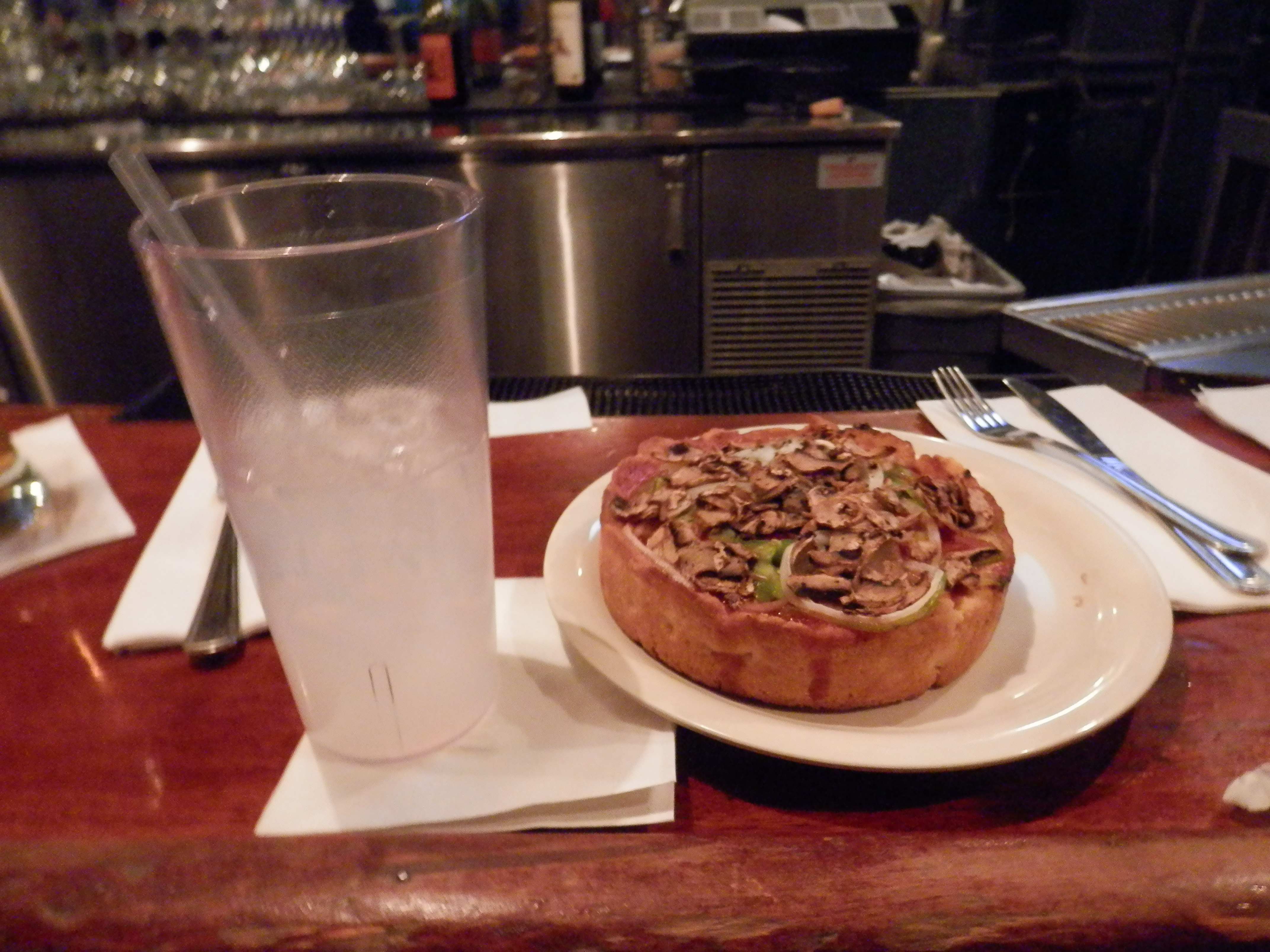Notes from the fly meeting- day 3
Posted by Catarina Vicente, on 7 March 2015
I’m reporting from the Drosophila meeting. You can read the post on days 1 and 2 here.
We woke up to another cold day here in Chicago, and kicked off straight away with concurrent sessions. This meant some tough decisions on which talks to listen to!
Proof that it really is cold- ice in the river by the hotel
I started by attending the session on cell division and cell death. The session covered several systems in which cell death is important. Richa Arya (Harvard) examined how the death of abdominal neuroblasts is spatiotemporally regulated, and showed that Notch is involved in this process. Another process in which apoptosis is important is spermatid individualisation. Eli Arama (Weizmann Institute of Science) showed that a Krebs cycle component and the mitochondria limit the rate of caspase activation during this process. The talk by Caitlin Fogarty (University of Massachusetts) brought together the two aspects of this session, as her project studied apoptosis-induced proliferation. She talked about the role of Reactive Oxygen Species (ROS) in this process. On the cell cycle side of the session, Norman Zielke (University of Heidelberg) explained how the FUCCI technology, in which fluorescent labels are assigned to different stages of the cell cycle, was adapted to the fly.
After the coffee break I decided to change gears by attending a different session. In the neurophysiology and behaviour session, Zepeng Yao (University of Michigan) talked about circadian clocks. He examined inter-clock coupling and the mechanisms of clock network coordination by varying the speed of the clock in specific subsets of neurons. In the same session, Soh Kohatsu (Tohoku University) was interested in the neuron activities that underlie courtship pursuit in males. The set up for this work made for a great video, which you can watch here. Males were attached to a metal tip, but allowed to otherwise move freely. When presented with a female, or other specific stimuli, the levels of activity could be measured by how much the fixed male moved over a foam ball! Behaviour drosophilists are inventive, but sometimes a simple set-up can provide the answer. Woo J. Kim (University of Ottawa) is interested in how social-sexual experience modulates male mating. By rearing individual males in containers with an upside mirror he could show that simply seeing another male can affect courtship.
During lunch time I attended a discussion about how scientists can influence policy makers to protect funding and raise awareness for science, led by the executive director of GSA, Adam Fagen. This session was opportune, considering the call to action made by Allan Spradling in the opening session, as well as recent comments by senator Rand Paul belittling fly research. Adam made the case for why scientists should be advocates for research with their representatives: the decisions made by politicians directly impact on funding for our work and the laws we must follow; and as scientists we have the credibility and expertise to inform their decisions. So how can we influence policy makers? While Adam’s suggestions were given in the context of the American system, many are of relevance to researchers in any country: meet your representative , ideal when they are in their constituency and hence more available; follow them on social media; participate in town hall meetings and use this opportunity to pose questions; write letters or articles to your local newspaper- your representative will care about the opinions that are expressed in the local community; invite elected officials to your lab/university- explain what you are doing and why it matters; give presentations about research to the local community and make it an issue that they also care about. In short, raise awareness to the topics that you, the voter, feel strongly about. Importantly, Adam encouraged all scientists to sign the petitions that are often emailed by societies or other groups. Such campaigns are all about showing that large numbers of people care about issues, and they often only require a few minutes to complete. How to get the message across though was the focus of the communication workshop that followed.
Raeka Aiyar (GSA) and Joyce Fernandes (University of Miami) started the communication workshop by discussing effective ways to talk about your research. All communication efforts must be driven and shaped by your specific goal. What are you trying to achieve? Equally important is to consider your audience. This means not only to consider, for example, the type of language, but also to the interests and concerns of the people who you are addressing. Finally, an unlike most scientific writing, it is important to start with the punchline, to make the public interested and keen to hear more. Other advice included the need for short messages, that are both meaningful and memorable to the audience. Andreas Prokop (University of Manchester) then talked about the efforts of the Manchester Fly Facility in reaching the public and explaining the importance of fly research. In the last 5 years they have developed a wide range of projects, from creating a training package for Drosophila genetics that anyone can download, to participating in science festivals and, more recently, working closely with schools to bring flies to the classroom to help in the teaching of concepts required by the national curriculum. Do check their website for more details, and have a look at their video explaining the importance of fly research. Finally, Isabel Palacios talked about DrosAfrica, an interesting project by which theoretical and practical workshops in Uganda and more recently Kenya, are sharing the word on the benefits of Drosophila research in sub-Saharan Africa, and hopefully encouraging and supporting the establishment of new labs in those countries. These presentations were then followed by an interesting discussion, in which the audience shared projects, resources online, and frequently encountered problems and opportunities. It was also generally agreed that the community would benefit of a centralised online location where links to resources and ideas could be collated.
Scene from The Fly Room
The afternoon saw another set of concurrent sessions, and we attended the session on techniques and resources. An emerging theme in this session was the importance of developing computational and mathematical processes to analyse and exploit large datasets, from imaging to genomic data. The day concluded with a special screening of The Fly Room. This feature film tells the story of the relationship between one of T.H.Morgan’s students, Calvin Bridges, and his 10 year old daughter. As the story progresses, there are many opportunities to introduce concepts of classical genetics, as well as some of the practicalities of doing research in flies. However, for the fly pushers out there the most interesting aspect of the film is the insight into the early days of fly genetics. While there are some obvious differences (e.g. researchers dressed rather smartly in those days, and the proportion of women in the labs was very low) many things are still very much the same. In one memorable scene Calvin discovers that one of the fly stocks is contaminated, and the rage and frustration that ensued will be understood by most fly researchers! So if you get the chance to watch The Fly Room, it is definitely recommended!
To finish the day I rewarded myself with what is a quintessential Chicago delicacy- the world famous deep dish pizza! A good way to fuel up for another day of science tomorrow!
You can follow the conference in real time by following the Node on twitter or via the conference hashtag #DROS2015





 (2 votes)
(2 votes)